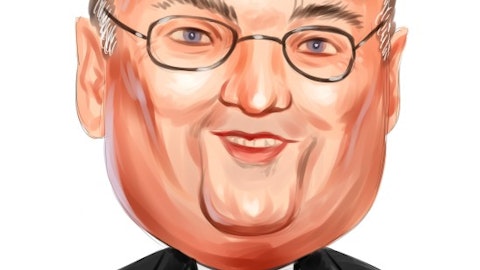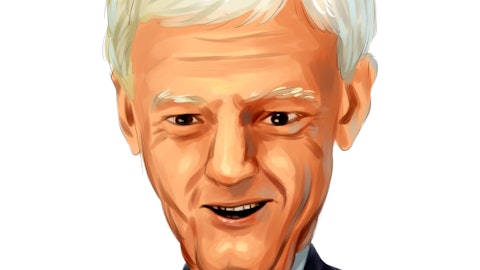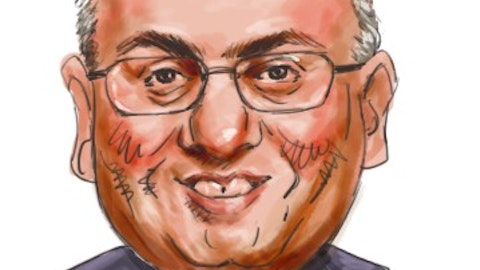We went from a pizza box-size device in the past, as you may recall, to an iPhone-size device, then to a kind of bulky wrist worn device, and now we’re down to something that is the size of a bracelet, which can be worn where we have really nice connection between the RF energy and the body to be able to make the accurate measurements. And this improvement over time in terms of our hardware has been very meaningful. And every time we scale down that hardware, as I’ve said, we get better data. So, we’re really excited about the start of this next clinical trial where we’re using our integrated circuit chip. As it relates to Apple’s recent press, they announced that they had started with a desktop device, and they’re making optical measurements versus RF.
And that desktop device, they’ve been trying now to scale down and they mentioned in the article and we see what you see. But they mentioned that they were in the process with their engineers of trying to get it down to the size of a device that’s about the size of a iPhone, which is where we were two revisions ago. So, from a hardware perspective and a scale down perspective, we believe we’ve got a very significant lead because now we’re down to a chip that’s 4 millimeters by 6.7 millimeters in size, which could even be put into a ring form factor. So, we’re pretty excited about that. And then, as it relates to the technological differences between optical and RF, I want to turn the call over to Michael Leabman, who is our CTO and Founder of the company, who is the expert in this space, and let him reply to that aspect of the question.
Michael Leabman: Yeah, thanks, John. I think first to add to what John said, we migrated technology from what was before four IC to a single IC. And I think we also mentioned before that’s at 22 nanometers, which is really the cutting edge, where GlobalFoundries, our partner, our chip partner, has developed. And that’s really improved our sensitivity by going to that process as well as combining all of our chips into a single IC. Our unique approach, which we now feel like we have a great moat of patents around, really focuses on millimeter wave, which has a lot of advantages from optical. And a lot of people tried optical over the last 10 years, with issues primarily related to skin thickness, freckles, tattoos, anything that light typically has issues with.
On the millimeter wave, as you know, really has those advantages by not being affected by those aforementioned things. As well as being able to be extremely small, typically optical will take some size, you can’t cover it. With millimeter wave, we can cover it with plastic and other things and really embed into any wearable, including our ring in the future. Thanks, John.
J. Cogan: We actually have a couple more questions, follow-ups on this point. So, I’m going to go ahead and ask those, and John and Michael if you want to just can decide who’s going to answer. But one question is, are we able to talk a little bit more about the composition of the studies? Where are we doing the studies? How many subjects will be in the studies, et cetera? And then, another question is, when do we expect to generate some data from these studies or other future studies that we can share more broadly?
John Mastrototaro: Well, I’ll start. Typically, we initiate trials in house feasibility studies and we’re able to bring — for blood pressure studies, for example, bring in 100 people from our local community in and evaluate them over the course of a few weeks when we’re looking at blood pressure. We compare to a hospital-grade blood pressure system when we’re making those measurements. When we get to the point of conducting our pivotal trials, we will do those with third-parties that are unbiased, obviously, and we want to evaluate the data like that, the same way that we did with our heart rate and SpO2 study that we conducted near the end of last year. So that’s how we do that. And then I know there’s a question about the number of people we evaluate and whatnot for a pivotal trial for both probably glucose and blood pressure.



